8 Reasons to Paint Your Interior Trim Black
http://decor-ideas.org 01/17/2015 03:13 Decor Ideas
By now many of you know about the benefits of painting your ceilings black and interior doors black. But if the large swaths of darkness in those approaches give you a bit of anxiety, consider using black — or a dark stain — on just your trimwork. “To this day black remains as a timeless neutral, but should be used in moderation,” says Ryan Martin, principal designer at Croma Design.
It’s not for every room or every style of home, but this trick has the potential to energize your space, highlight a view or hide a few visual imperfections. Check out these examples to determine if painting your baseboards, casings and moldings black is right for you.
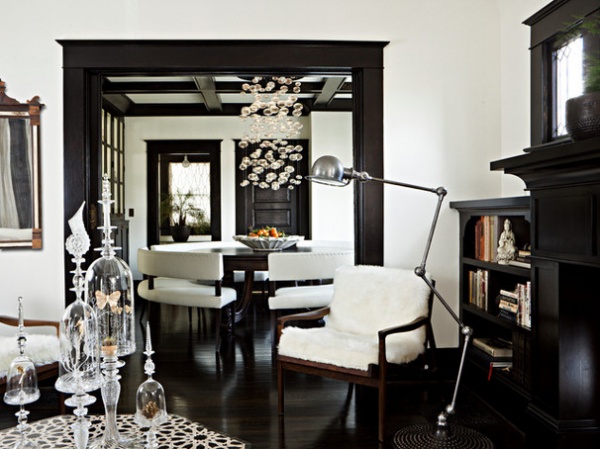
1. Energize a space. Designer Jessica Helgerson says the high contrast between white walls and black or dark trim creates an eye-opening environment that can raise blood pressure. She used an ebony stain in this Portland, Oregon, foursquare home to do just that. “It’s a nice tool for creating a fresh, ‘pop’-y, bold environment,” she says. “If you want something more soothing or mellow, go with softer tones on the walls, ceiling and trim.”
With that in mind, Helgerson says it would make sense to paint trim black in, say, a dining room where you plan to have lively dinner parties, but maybe not in a bathroom where you’re looking for a spa-like feel.
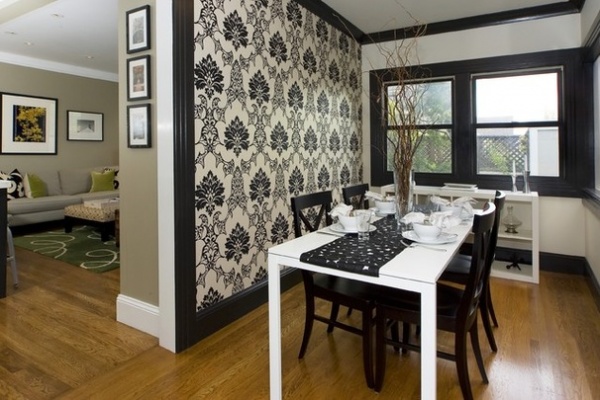
2. Push over-the-top wallpaper. Designer Shelly Amoroso loves using black trim to outline a focal point, like the wall covered in graphic wallpaper shown here. “It really makes it pop out,” she says.
For this project she used Benjamin Moore’s Black in a high-gloss finish. “It’s a true black — no purple, nothing else,” she says.
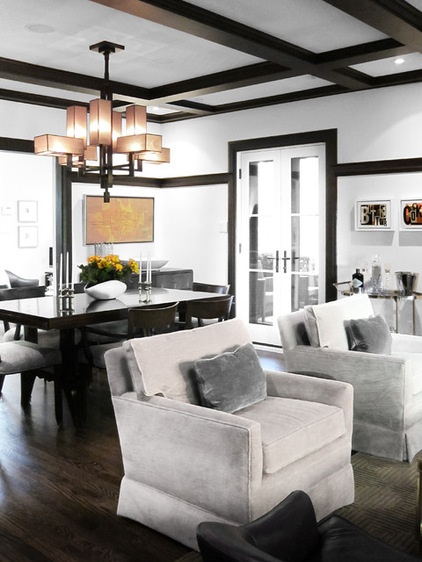
3. Hide imperfections. If you’re restoring an old home or even updating a new one, and you’ve replaced wood trim in a way that the new grains don’t exactly match up with the old, then painting the trim dark can help hide those subtle imperfections.
That’s what Martin did for this Toronto home. “We wanted to respect the house’s existing woodwork, restoring where possible and replicating where new was required,” he says. “While the existing wood trim had a slight reddish tinge, we had it darkened to reduce the red for a more neutral palette.”
For this approach both Martin and Helgerson recommend a dark stain over painting because it holds up better. “There’s nothing like an ebonized stain to hide all sorts of lack of beauty,” she says. “It really neutralizes it.”
Another thing to keep in mind, Martin notes, is that it’s easier to paint a dark color over a lighter one than it is to paint a light color over a dark one.
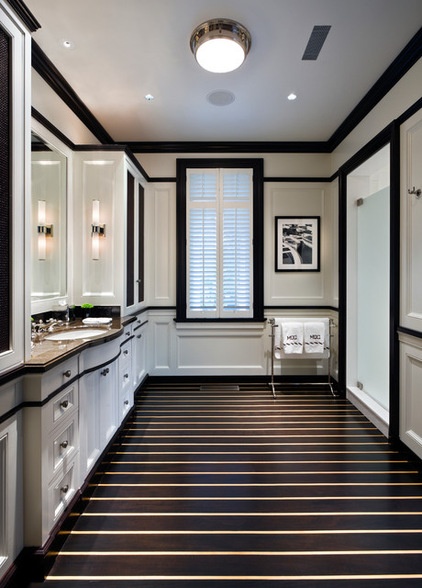
4. Create a graphic look. Who needs wallpaper when your space can be the graphic element? Amoroso, who has an animation background, says black trim can really make a plain space make a statement. “A hard black outline always defines shapes and makes them bolder,” she says.
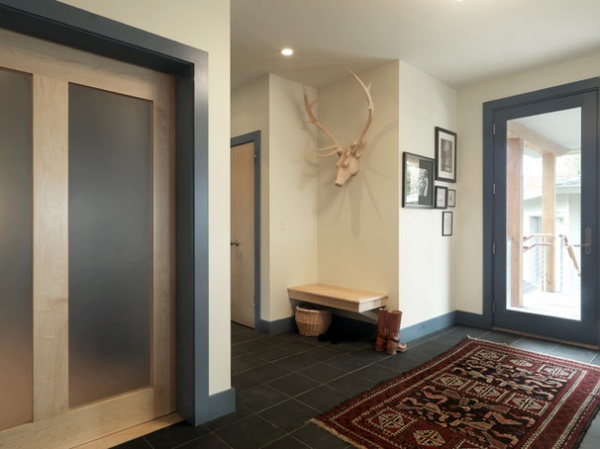
5. Hide those scuff marks. There can be a practical reason for painting or staining your trim dark. If you’ve got kids and pets in the house, there’s probably no end to baseboard nicks and scuffs. Darker colors tend to be a little more forgiving.
But keep in mind, while black can certainly hide scuff marks better than white, darker colors tend to show dust more than lighter colors.
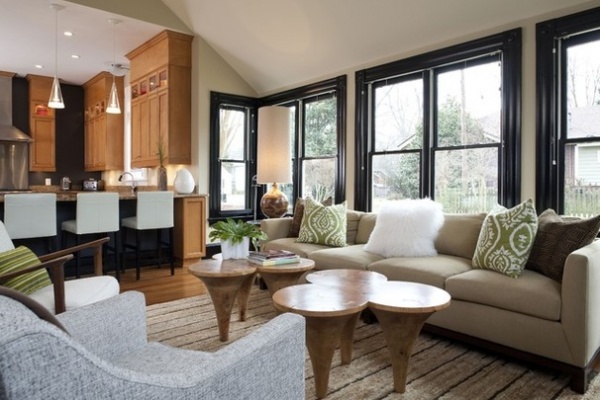
6. Highlight a view. Framing a view in black can draw the eye in, showcasing an outside view or just pulling attention away from an unsightlier area of the home.
The downside is that you’ll lose the textural and sculptural aspect of the window mullions at night, because the darkness blends in with the blackness of the window pane. Also, be cautious with this approach. It’s probably best for north-facing rooms and homes, because “dark trim fights against a sun-filled room,” Martin says.
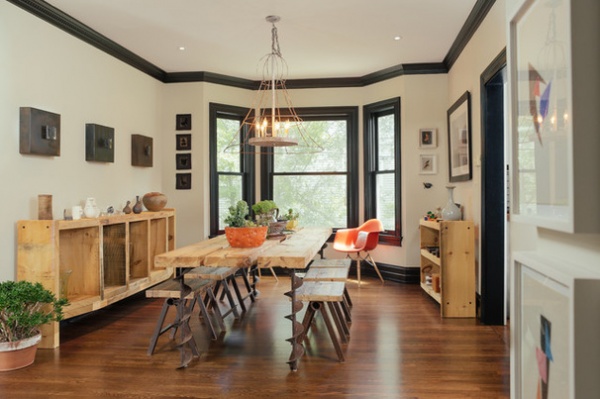
7. Create the illusion of more architecture. When you have amazing architecture, textural white moldings can make a statement on their own. But when you don’t have a lot to work with, painting your trim black can create the appearance of more interesting structural features, lines and movement.
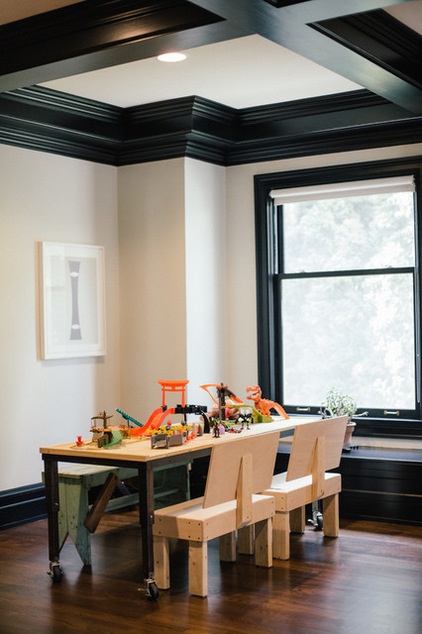
8. Emphasize height. Black has a tendency to draw eyes to it, so using darker colors in high-ceilinged spaces can have a dramatic affect. Amoroso cautions that this method doesn’t work to give the appearance of high ceilings, so it’s not recommended for rooms with low ceiling height. “That can look a little cartoonish, like a little kid’s drawing of a house,” she says.
Tell us: Have you painted your interior trim black? Post pictures and tell us about it in the Comments.
More:
11 Reasons to Paint Your Interior Doors Black
11 Reasons to Paint Your Ceiling Black
Related Articles Recommended












